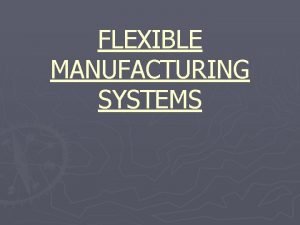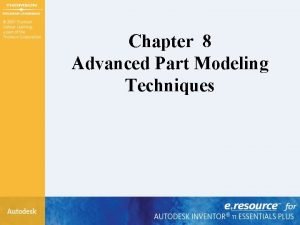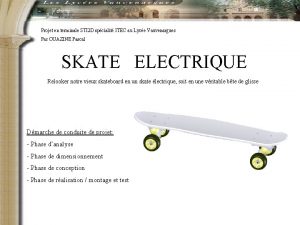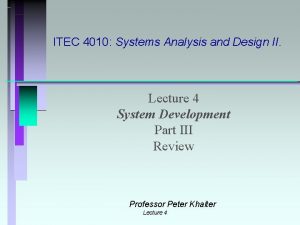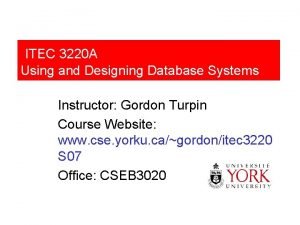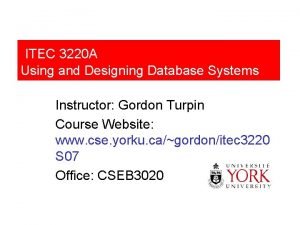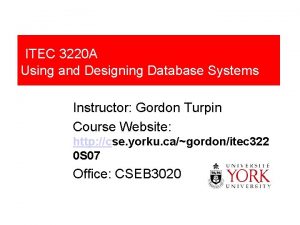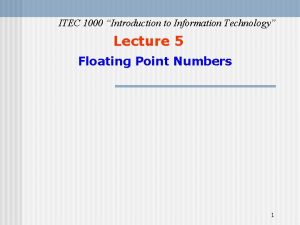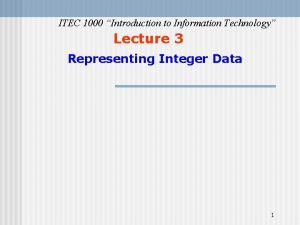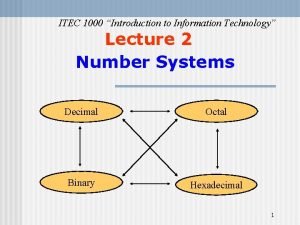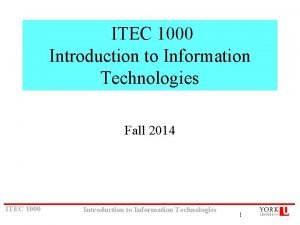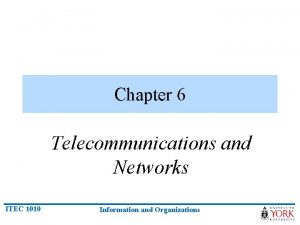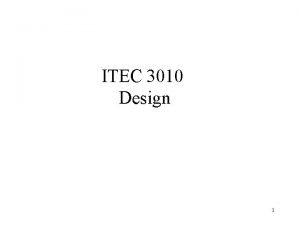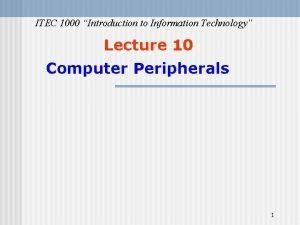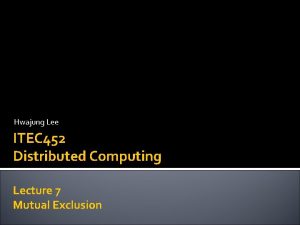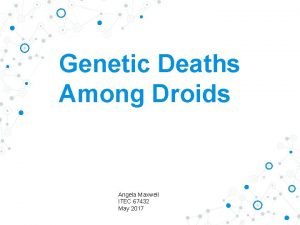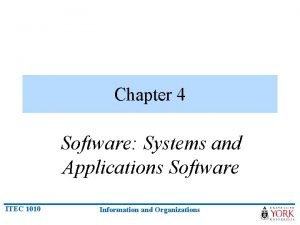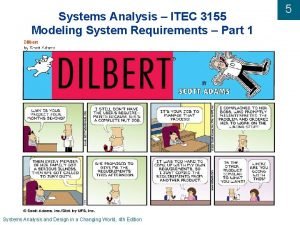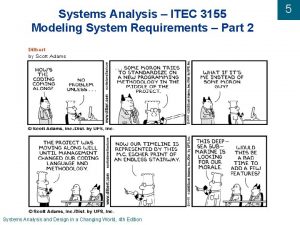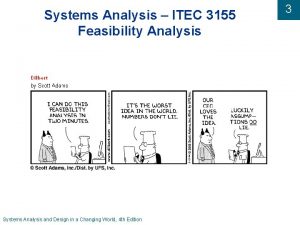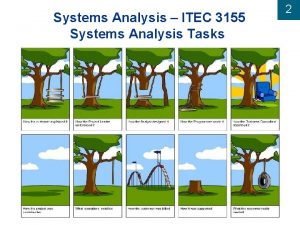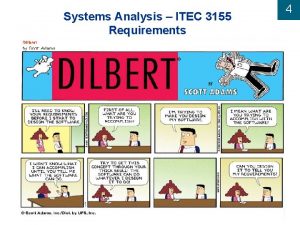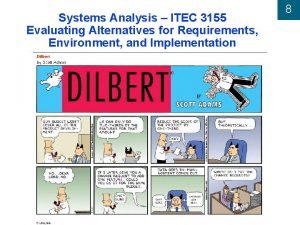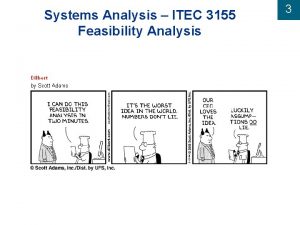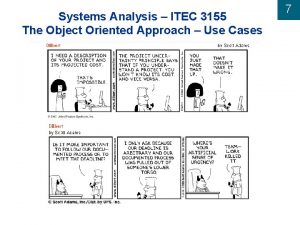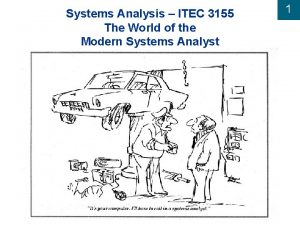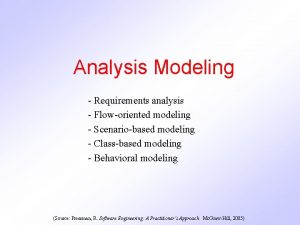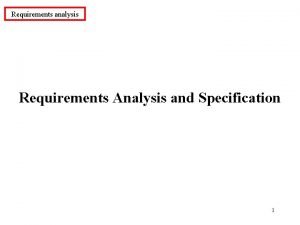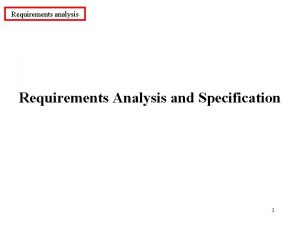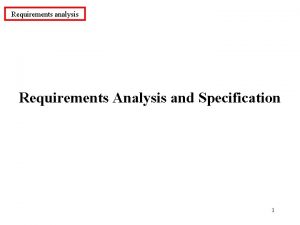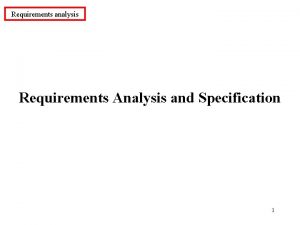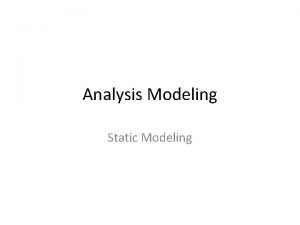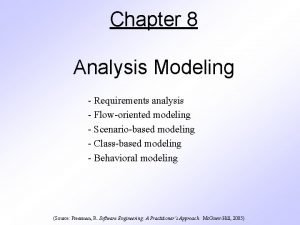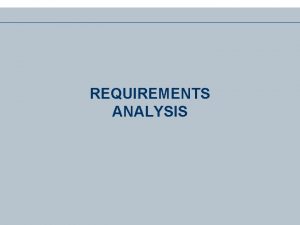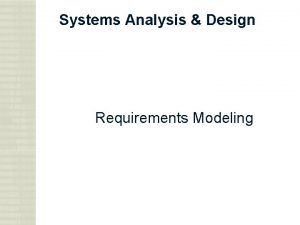Systems Analysis ITEC 3155 Modeling System Requirements Part






























- Slides: 30

Systems Analysis – ITEC 3155 Modeling System Requirements – Part 1 5

5 Learning Objectives u Explain the many reasons for creating information system models u Describe three types of models and list some specific models used for analysis and design u Explain how events can be used to define activities and use cases u Identify and analyze events to which a system responds Systems Analysis and Design in a Changing World, 4 th Edition 2

5 Overview u Models created during analysis phase activity – Define system requirements u Two concepts help identify functional requirements in the traditional approach and object-oriented approach l Events that trigger use cases l Things in the users’ work domain Systems Analysis and Design in a Changing World, 4 th Edition 3

5 Models and Modeling Why Model? u Models assist with communication l Standard notations specific to certain disciplines l Musical notation Systems Analysis and Design in a Changing World, 4 th Edition 4

5 Models and Modeling (cont. ) l Mathematical notation l Electrical schematic Systems Analysis and Design in a Changing World, 4 th Edition 5

5 Models and Modeling (cont. ) Why Model? u Provides a common “language” to bring together project stakeholders involved in systems development u Process of creating models helps analyst clarify and refine design u Document u Part functional requirements of the system documentation Systems Analysis and Design in a Changing World, 4 th Edition 6

5 Models and Modeling (cont. ) u Analyst describes information system requirements using a collection of models u Complex systems require more than one type of model u Models represent some aspect of the system being built Systems Analysis and Design in a Changing World, 4 th Edition 7

5 Reasons for Modeling (Figure 5 -2) Systems Analysis and Design in a Changing World, 4 th Edition 8

5 Types of Models u Different types of models are used in systems development l Business Models – abstract representation of a business that provides a simplified look at various aspects of the business. Systems Analysis and Design in a Changing World, 4 th Edition 9

5 Types of Models u Different types of models are used in systems development l Requirements Models u Mathematical – formulas that describe technical aspects of the system u Descriptive – narrative memos, reports, or lists that describe aspects of the system u Graphical – diagrams and schematic representations of some aspect of the system Systems Analysis and Design in a Changing World, 4 th Edition 10

5 Types of Models Systems Analysis and Design in a Changing World, 4 th Edition 11

5 Some Descriptive Models (Figure 5 -3) Systems Analysis and Design in a Changing World, 4 th Edition 12

Overview of Models Used in Analysis and Design 5 u Analysis phase activity named “define system requirements” l Logical models l Provide detail without regard to specific technology u Design phase l Physical models l Provide technical details l Extend logical models Systems Analysis and Design in a Changing World, 4 th Edition 13

5 Models Created by Analysis Activities (Figure 5 -4) Systems Analysis and Design in a Changing World, 4 th Edition 14

5 Models Used in Design (Figure 5 -5) Systems Analysis and Design in a Changing World, 4 th Edition 15

5 Events, Activities, and Use Cases u u Use Case l An activity the system performs in response to a user request l A “case” where the system is used by actor Techniques for identifying use cases l Identify user goals u u l Each goal at the elementary business process (EBP) level is a use case EBP – a task performed by one user, in one place in response to a business event, that adds measurable business value, and leaves system and data in consistent state Event decomposition technique Systems Analysis and Design in a Changing World, 4 th Edition 16

Identifying Use Cases Based on User Goals (Figure 5 -6) Systems Analysis and Design in a Changing World, 4 th Edition 5 17

5 Event Decomposition u Business events trigger elementary business processes (EBPs) u EBPs are at correct level of analysis for use cases u Identify business events to decompose system into activities/use cases u Event decomposition is, therefore, used by l Traditional approach to identify activities l OO approach to identify use cases Systems Analysis and Design in a Changing World, 4 th Edition 18

5 Types of Events u External l Outside system l Initiated by external agent or actor u Temporal l Occur as result of reaching a point in time l Based on system deadlines u State l (Internal) Something inside system triggers processing need Systems Analysis and Design in a Changing World, 4 th Edition 19

Events Affecting a Charge Account Processing System that Lead to Use Cases (Figure 5 -7) Systems Analysis and Design in a Changing World, 4 th Edition 5 20

5 External Event Checklist (Figure 5 -8) Systems Analysis and Design in a Changing World, 4 th Edition 21

5 Temporal Event Checklist (Figure 5 -9) Systems Analysis and Design in a Changing World, 4 th Edition 22

5 Identifying Events u Can be difficult to determine u Often u May confused with conditions and responses be useful to trace a transaction’s life cycle u Certain events left to design phase l System controls to protect system integrity l Perfect technology assumption Systems Analysis and Design in a Changing World, 4 th Edition 23

Sequence of Actions that Lead Up to Only One Event Affecting the System (Figure 5 -10) Systems Analysis and Design in a Changing World, 4 th Edition 5 24

Sequence of “Transactions” for One Specific Customer Resulting in Many Events (Figure 5 -11) Systems Analysis and Design in a Changing World, 4 th Edition 5 25

Events Deferred Until the Design Phase 5 (Figure 5 -12) Systems Analysis and Design in a Changing World, 4 th Edition 26

5 Events in the RMO case u Important l Customer checks item availability, customer places order, customer changes or cancels order u Other l external events involve departments Shipping fulfills order, marketing sends promotion to customer, merchandising updates catalog u Temporal l external events involve customers events include periodic reports Time to produce order summary reports, Time to produce fulfillment summary reports Systems Analysis and Design in a Changing World, 4 th Edition 27

Information about Each Event in an Event Table: 5 Catalog of Information about Each Use Case (Figure 5 -15) Systems Analysis and Design in a Changing World, 4 th Edition 28

RMO Event Table (Figure 5 -6 partial) Systems Analysis and Design in a Changing World, 4 th Edition 5 29

5 Next Class u Quiz 2 u Chapter l u 5 continued Lab – Event Table Exam 1 is next Monday!!!!!!! Systems Analysis and Design in a Changing World, 4 th Edition 30
 Requirements modeling in system analysis and design
Requirements modeling in system analysis and design Manufacturing systems modeling and analysis
Manufacturing systems modeling and analysis Modeling role modeling theory
Modeling role modeling theory Relational vs dimensional data modeling
Relational vs dimensional data modeling Answers key
Answers key Advanced evolution chapter 8
Advanced evolution chapter 8 Projet terminale sti2d itec
Projet terminale sti2d itec Ad systems exam slide
Ad systems exam slide Itec 4010
Itec 4010 Itec 3220
Itec 3220 Gestin itec
Gestin itec Itec 3220
Itec 3220 Itec 3220
Itec 3220 Itec 1000
Itec 1000 Itec 1000
Itec 1000 Itec 1000
Itec 1000 Itec 1000
Itec 1000 Itec 1000
Itec 1000 Itec 1010
Itec 1010 Itec exam results
Itec exam results Itec 3010
Itec 3010 Dot pitch
Dot pitch Itec irrigation controller
Itec irrigation controller Itec 350
Itec 350 Itec
Itec Itec
Itec Cs itec
Cs itec Itec
Itec Edmodo founders
Edmodo founders Qu es
Qu es Itec software
Itec software

